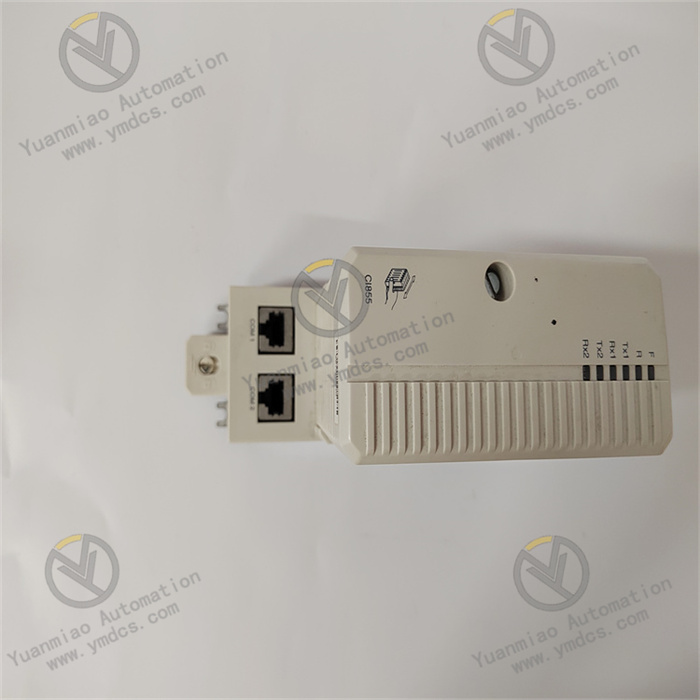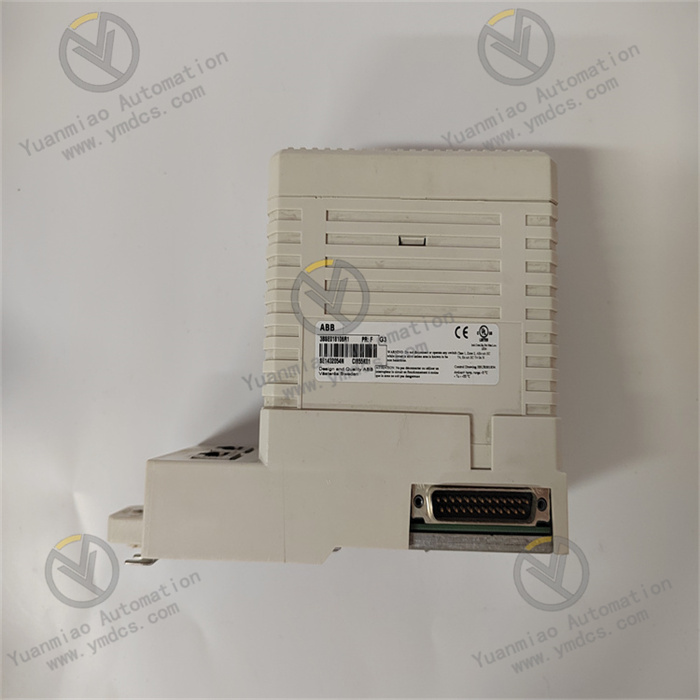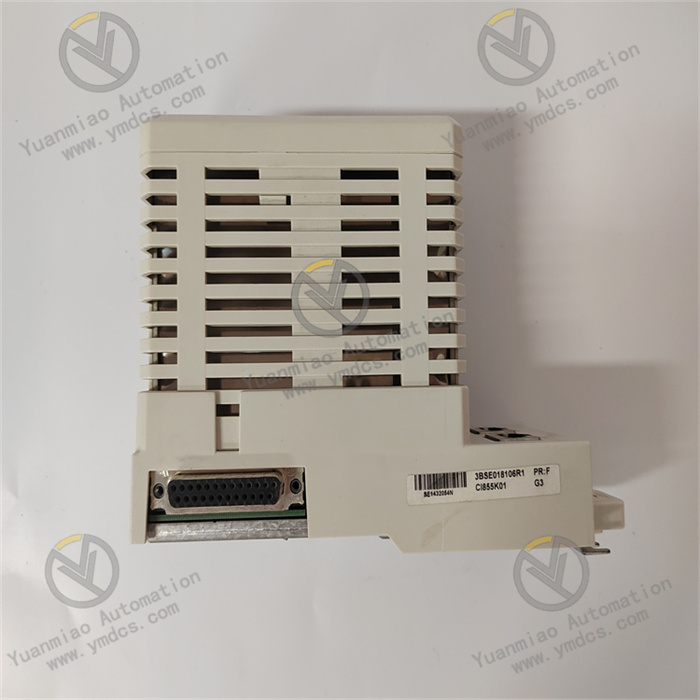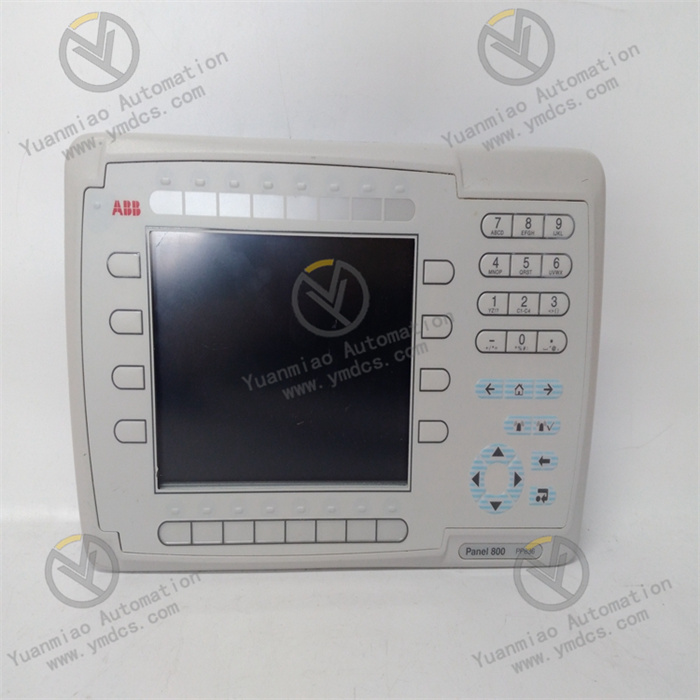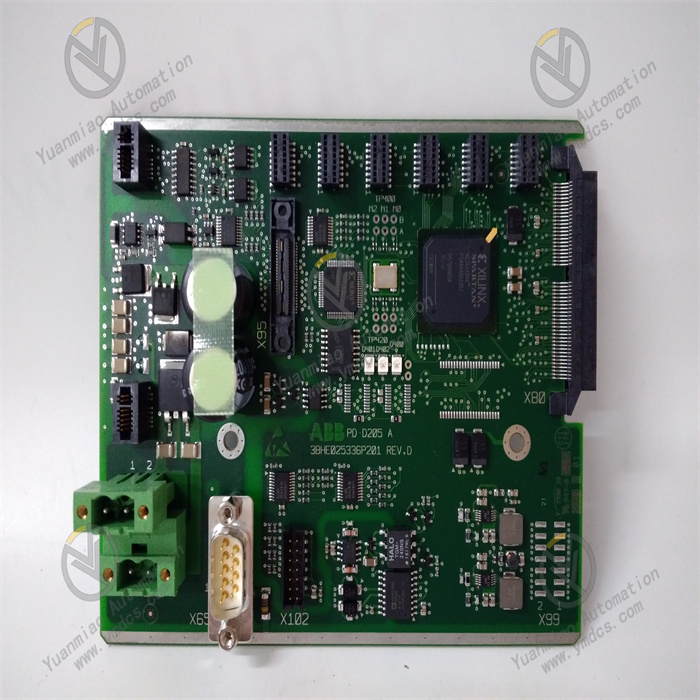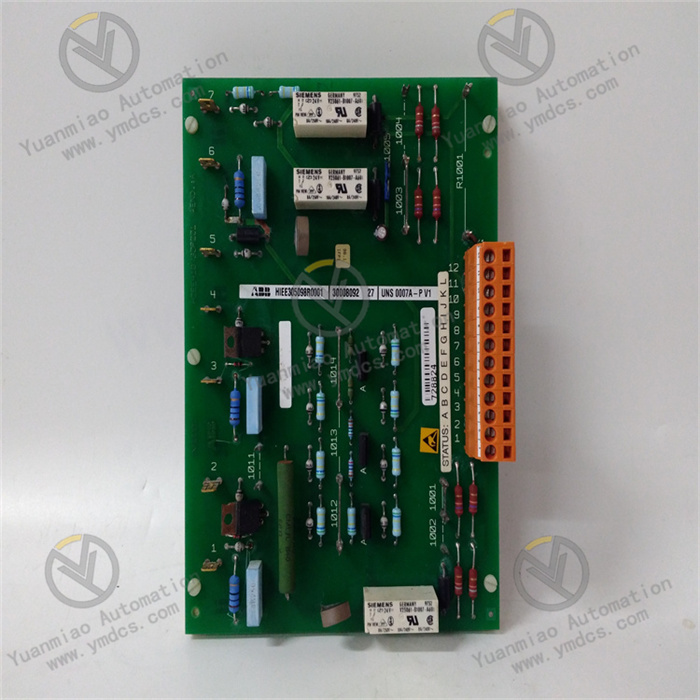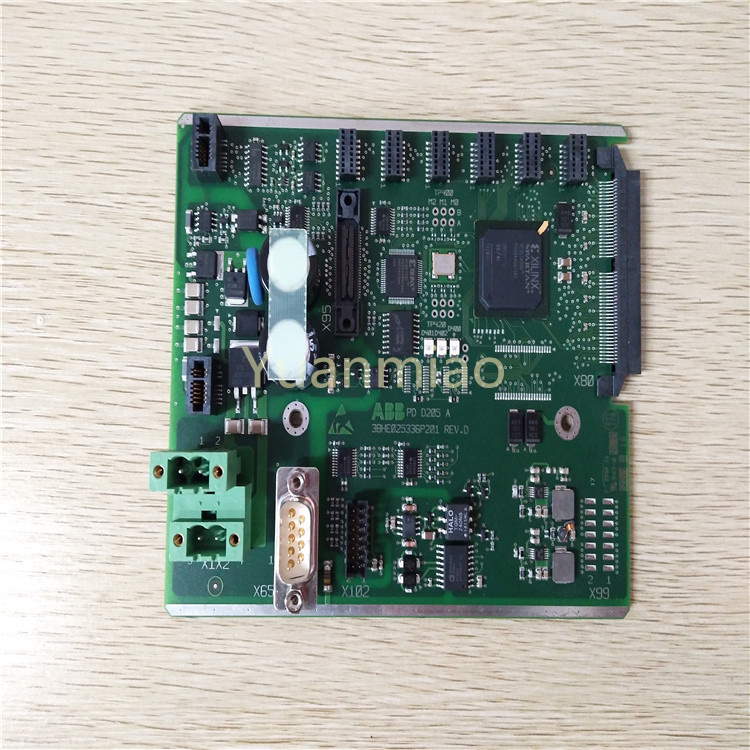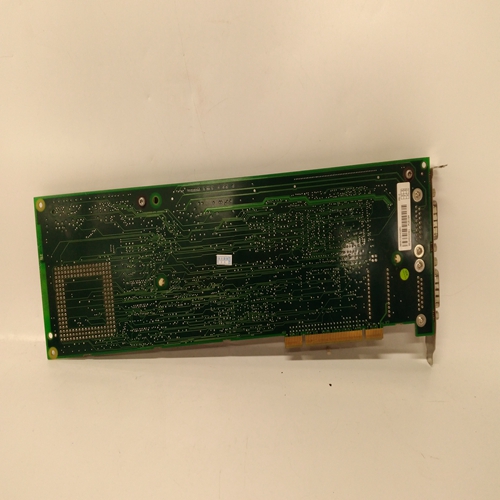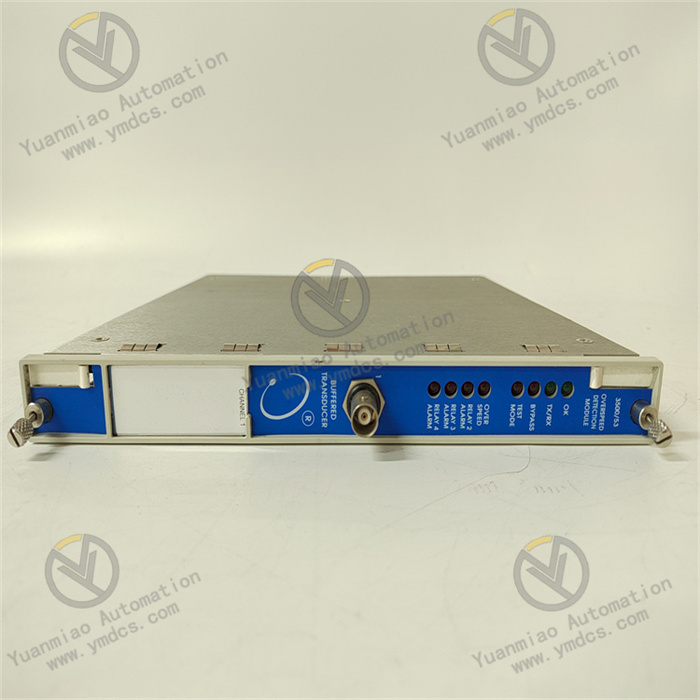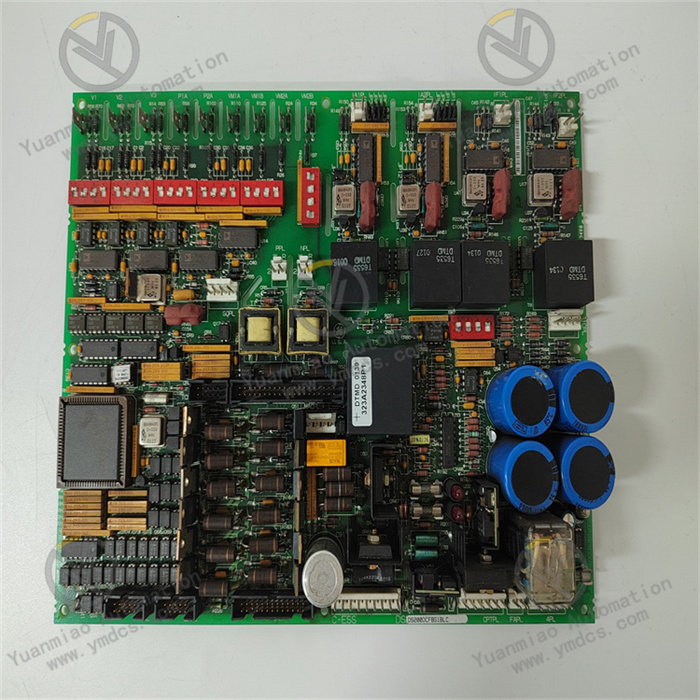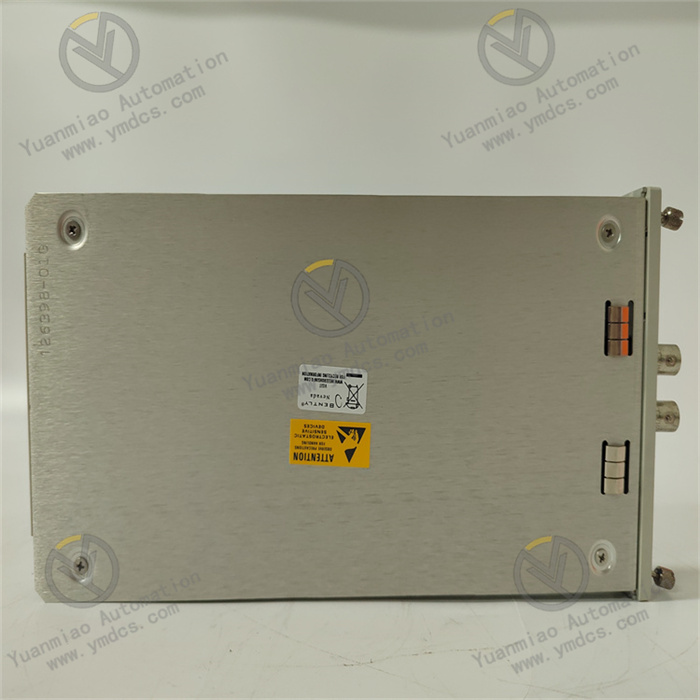Description
ABB CI855 3BSE018106R1
Functional Features:
Multi-Protocol Support: Supports multiple communication protocols such as Modbus (RTU, ASCII), PROFIBUS DP, PROFINET, Ethernet/IP, and Modbus TCP. It can communicate with various industrial control systems, PLCs, or field devices to meet the needs of different application scenarios.
Network Redundancy: Achieves network redundancy through RJ45 connectors on two Ethernet ports of the baseplate TP853, enhancing the reliability and stability of the communication system and ensuring uninterrupted data transmission in industrial production processes.
Clock Synchronization: Features clock synchronization to keep devices across the entire system time-aligned, which is crucial for industrial process control requiring precise time synchronization (e.g., coordinating operations of nodes in distributed control systems).
Point-to-Point Communication: Enables point-to-point communication between the new plant section using the AC 800M controller in System 800xA and the existing section using MB 300-based controllers (e.g., Advant Controller 410, Advant Controller 450, and MasterPiece 200/1), facilitating data interaction and collaborative work between different control systems.
Network Redundancy: Achieves network redundancy through RJ45 connectors on two Ethernet ports of the baseplate TP853, enhancing the reliability and stability of the communication system and ensuring uninterrupted data transmission in industrial production processes.
Clock Synchronization: Features clock synchronization to keep devices across the entire system time-aligned, which is crucial for industrial process control requiring precise time synchronization (e.g., coordinating operations of nodes in distributed control systems).
Point-to-Point Communication: Enables point-to-point communication between the new plant section using the AC 800M controller in System 800xA and the existing section using MB 300-based controllers (e.g., Advant Controller 410, Advant Controller 450, and MasterPiece 200/1), facilitating data interaction and collaborative work between different control systems.
Technical Parameters:
Communication Interface: Two RJ45 Ethernet ports support 1Gbps high-speed data exchange, enabling connection to various industrial devices and networks.
Dimensions and Weight: 18.6cm (height) × 5.9cm (width) × 12.75cm (depth), weighing approximately 0.7kg. The compact design allows easy installation in industrial control cabinets and other space-constrained environments.
Operating Temperature: -20°C to +60°C, adapting to multiple industrial environmental temperature conditions with strong environmental adaptability.
Power Consumption: Low-power design helps save energy, reduce heat generation, and improve system stability and reliability.
Dimensions and Weight: 18.6cm (height) × 5.9cm (width) × 12.75cm (depth), weighing approximately 0.7kg. The compact design allows easy installation in industrial control cabinets and other space-constrained environments.
Operating Temperature: -20°C to +60°C, adapting to multiple industrial environmental temperature conditions with strong environmental adaptability.
Power Consumption: Low-power design helps save energy, reduce heat generation, and improve system stability and reliability.
Operation Guide for ABB CI855 3BSE018106R1 Module:
Installation
Preparation: Ensure the installation environment meets the module’s requirements and prepare necessary tools (e.g., screwdriver).
Installation Location: Typically installed on the rack of the ABB AC 800M controller. Determine the appropriate slot position based on the system configuration.
Module Fixing: Smoothly insert the CI855 module into the selected slot to ensure good connection with the backplane bus. Secure it firmly to the rack using screws or other fixing devices.
Cable Connection: Connect communication cables to the module’s corresponding interfaces (e.g., Ethernet ports) to ensure secure connections. If redundant networking is supported, correctly connect the redundant lines. Meanwhile, connect the power cable to provide stable power to the module.
Installation Location: Typically installed on the rack of the ABB AC 800M controller. Determine the appropriate slot position based on the system configuration.
Module Fixing: Smoothly insert the CI855 module into the selected slot to ensure good connection with the backplane bus. Secure it firmly to the rack using screws or other fixing devices.
Cable Connection: Connect communication cables to the module’s corresponding interfaces (e.g., Ethernet ports) to ensure secure connections. If redundant networking is supported, correctly connect the redundant lines. Meanwhile, connect the power cable to provide stable power to the module.
Configuration
Software Preparation: Install and open ABB Control Builder M software or other relevant configuration tools, ensuring the software version is compatible with the module.
Project Creation: Create a new project in the configuration software or open an existing relevant project.
Module Addition: Add the CI855 module to the project, typically by selecting the corresponding module model in the hardware configuration interface.
Parameter Setting:
Project Creation: Create a new project in the configuration software or open an existing relevant project.
Module Addition: Add the CI855 module to the project, typically by selecting the corresponding module model in the hardware configuration interface.
Parameter Setting:
- Communication Parameters: Set the module’s communication protocol (e.g., PROFIBUS DP, Modbus), station address, baud rate, etc., according to the actual application scenario to ensure parameter matching with other connected devices.
- Network Parameters: If the module is used for network communication, configure relevant network parameters (e.g., IP address, subnet mask, gateway) to enable correct network connection with other devices.
- Other Parameters: Depending on specific needs, additional parameters such as data transmission format and scan cycle may need to be set.
Configuration Download: After completing the parameter settings, download the configuration information to the CI855 module to make it operate according to the set parameters.
Operation and Monitoring
System Startup: After installation and configuration, start the entire control system, including related controllers and power modules, to ensure normal system operation.
Module Status Monitoring: Observe the operating status of the CI855 module via the indicator lights on the module or the monitoring interface in the configuration software. For example, check whether the power indicator is on and whether the communication indicator blinks normally. If the indicators show abnormalities, troubleshoot according to the descriptions in the module manual.
Data Communication Test: Perform simple data communication tests to verify whether the module can normally exchange data with other devices. For example, attempt to read or write data and check the accuracy and timeliness of data transmission.
System Operation Monitoring: Continuously monitor the performance and status of the CI855 module during system operation, including communication quality and data transmission rate. If necessary, use the diagnostic tools provided by the configuration software to conduct detailed diagnosis and analysis of the module, and promptly identify and resolve potential issues.
Module Status Monitoring: Observe the operating status of the CI855 module via the indicator lights on the module or the monitoring interface in the configuration software. For example, check whether the power indicator is on and whether the communication indicator blinks normally. If the indicators show abnormalities, troubleshoot according to the descriptions in the module manual.
Data Communication Test: Perform simple data communication tests to verify whether the module can normally exchange data with other devices. For example, attempt to read or write data and check the accuracy and timeliness of data transmission.
System Operation Monitoring: Continuously monitor the performance and status of the CI855 module during system operation, including communication quality and data transmission rate. If necessary, use the diagnostic tools provided by the configuration software to conduct detailed diagnosis and analysis of the module, and promptly identify and resolve potential issues.
Maintenance and Care
Regular Inspection: Regularly inspect the module’s appearance to ensure no damage, looseness, or overheating. Check whether the connection cables are secure and free from wear or corrosion.
Module Cleaning: Clean the module’s casing with a soft dry cloth. Avoid using chemical cleaners or wet cloths to prevent damage to the module.
Environmental Maintenance: Keep the environment around the module clean and dry, and avoid the accumulation of dust, moisture, and corrosive gases to ensure the module’s normal operation.
Fault Handling: If a module fault occurs, first refer to the module’s fault code table or relevant manual to understand the specific cause of the fault and possible solutions.
Module Cleaning: Clean the module’s casing with a soft dry cloth. Avoid using chemical cleaners or wet cloths to prevent damage to the module.
Environmental Maintenance: Keep the environment around the module clean and dry, and avoid the accumulation of dust, moisture, and corrosive gases to ensure the module’s normal operation.
Fault Handling: If a module fault occurs, first refer to the module’s fault code table or relevant manual to understand the specific cause of the fault and possible solutions.


